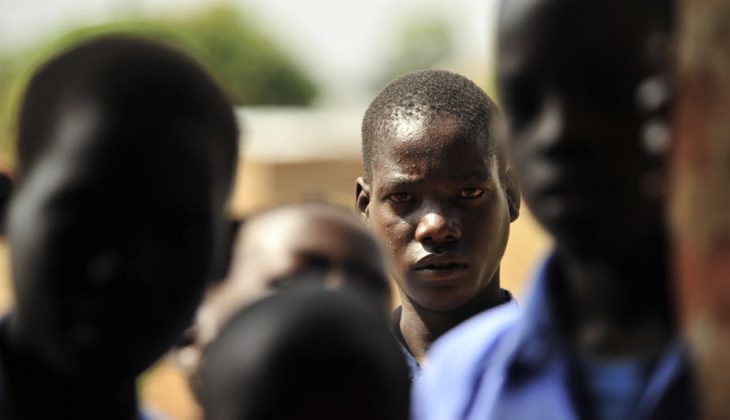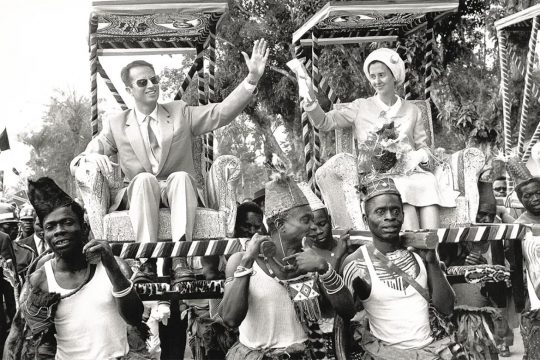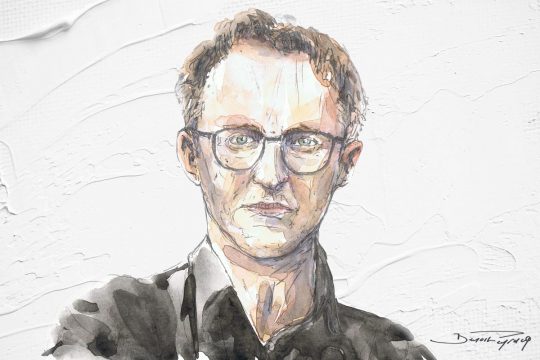I conduct research on wartime sexual violence. But hold on.
My work focuses on the non-cases: armed political actors which have committed little sexual violence and have a history of disciplining their members’ sexual behaviour.
This effort seems ridiculously extraneous in the current climate. Just in the last years, Boko Haram in Nigeria and the Islamic State of Iraq and the Levant (ISIL or Daesh) in Syria and Iraq have systematically abducted and abused thousands of women and girls.
However, as researcher Elisabeth Jean Wood has demonstrated, sexual violence patterns vary because armed groups are different. And their diverse politics, strategies and institutional “DNA” is evident in their varied wartime conduct.
In another context, the #MeToo reckoning has uncovered the wide, wide array of sectors that have ignored complaints about perpetrators, while nurturing hostile and abusive climates of impunity. Humanitarian actors in particular, seem to be making innovative reforms. Even as new allegations arise, agencies of the United Nations (UN), for example, are establishing new measures. The UN has disseminated information about its zero-tolerance policy to its field personnel and established a task force to prevent sexual exploitation and abuse. It has increased transparency, and we now know more about incidents inside the UN. In the last quarter of 2017, reporting mechanisms have received 40 allegations across the organisation.
But for all that to have an impact, the UN and other actors must also embrace fresh ideas about gender norms and sexuality, and translate these into behaviours that can be modelled and transmitted to new recruits, middle-managers and old hands. That’s stopping sexual predation before it happens. That’s prevention.
After all, ragtag rebel armies in poor countries, with unequal gender relations and limited resources, have done it.
During my research in Burundi and Uganda, I have learned that sometimes rebel and insurgent groups arise in societies with dreadful levels of gender inequality, and yet train their fighters to scorn sexual coercion. To them, rapists should be shunned or executed.
Learning from ragtag armies
In Burundi, the Party for the Liberation of the Hutu People–Forces for National Liberation (FNL) was rarely associated with wartime rape or similar abuses during or after the civil war. This is particularly striking if we consider that the coinciding and bordering genocide in Rwanda, between similar “ethnic” groups and with comparable causes of conflict, included widespread sexual violence against Tutsis committed by Hutus, by the then government-sponsored militia group known as Interahamwe. Palipehutu-FNL also attacked Tutsi civilians. However, its fighters did not permit or order sexual violence.
Civil war research contends that armed actors that do not rely on civilians for support are likelier to abuse them. This is an important clue, also demonstrated by scholars such as Jeremy Weinstein. Movements that prevent sexual violence may be motivated to ensure good relations with the local population for pragmatic, operational reasons. They need shelter, food, information and recruits. But going further, how do they achieve sexual discipline over their fighters?
In the 1980s, Uganda’s National Resistance Army (NRA) launched a rebellion with a handful of weapons and very few men. It defined itself as a people’s army, and depended heavily on support from the country’s peasant population. It is believed to have committed little to no acts of sexual violence. Commanders and civilians I have interviewed tell me that the group’s leaders presided over justice on behalf of civilians and exercised discipline against its fighters. The NRA code of conductinstructs members to refrain from shouting at, abusing or insulting the public, while also asserting that rape was punishable by death.
‘Many women are wives or daughters of somebody, somewhere’
Over 30 years later, former NRA members have recited to me the saying they learned in the bush: “Many women are wives or daughters of somebody, somewhere”.
Let’s pause here. Other armed groups have allowed rape as a practiceand/or committed it as a strategy for war purposes. Erin Baines has convincingly explained how another rebellion (also in Uganda), the Lord’s Resistance Army (LRA) used forced marriage and policed sexual relations by its members as a way to give birth to its own ethnically based nation. And other armed movements can be indiscriminate and opportunistic. They may not order sexual violence, but it is still a pronounced part of their conduct. For these types of rebel groups, women’s bodies are the staging ground for advancing the insurgency, or just part of the spoils of war.
But according to the code of the NRA, all women deserved the same treatment as their own sisters or daughters or wives. The leadership sought to nurture a sense of empathy based on these roles, to get its fighters to relate to females through this lens. Rape would not only harm women and girls but rupture important relationships with the local population and the wider community. (This is not particularly empowering for women’s sexual autonomy, since it still positions female bodily integrity in relation to kinship bonds. But that is another matter.) The emphasis on “family” makes sense across diverse cultural contexts in many parts of the world.
Indeed, this command had an important impact. It shaped minds and hearts and helped the men remain true to an ideal of sexual discipline not seen in everyday life. They could not engage in unsanctioned relationships or sexual predation. It was reinforced by specific notions of masculinity, particularly that a “real man” would not coerce sex, and in relation to a political ideology of liberation of Ugandans.
The NRA’s war took place before the current existing data-collection efforts and parameters of the Sexual Violence in Conflict Dataset. Still, I doubt we would have been able to add it to today’s list of armed actors with a pattern of sexual violence. Nevertheless, we can learn something about preventing sexual violence from such actors.
Religion as a preventive tool
Strikingly, the FNL fighters in Burundi also developed confessional practices. Cohorts would name and shame one another in group prayers, for instance.
Fighters who engaged in sexual activity were viewed as weak or opportunistic, and this coincided with a culture of Christian purity. The majority of Burundians practice some form of Christianity, and the political elite in the country often have been vocal proponents of this faith. The leaders of FNL were no different, and they and their followers were born-again Christians of one conviction or another. Its members referred to themselves as God’s army. Commanders as well as foot soldiers were held equally accountable to values, often formulated and practised within a religious context.
Finally, in the hierarchy of the group’s gender norms, the best men were those that could cast aside sexual conquest in the service of chivalry and their brotherly bond to the group. And a new ideal was born.
Stigmatizing sexual predation
My research shows that prevention is possible, even in the most startling contexts. The rebel armies I’ve examined have not had perfect track records. They used capital punishment and fell well short of my feminist standards. They promoted masculinities that continued to position women as dependant on male protection. Moreover, without active and persistent stigmatisation of sexual coercion, it seems that the longevity of prevention was short-term.
I do not doubt there are survivors of abuse by members of these groups. But the pattern is of institutional prevention, not predation. These insurgents crafted masculine norms of soldiering that emphasised empathy for women and girls, and respect for wider societal bonds. Life in these rebel armies included value-based measures for shaming and punishing predators, not promoting them.
Stopping sexual violence before it happens is possible. Despite other factors that could induce these armed groups to permit their fighters’ assaulting civilians (and co-combatant females), they chose to invest in creating new norms and behaviours, and ultimately, preferences for sexual discipline. And it worked.
Imagine then, the depth of change that is possible elsewhere.





